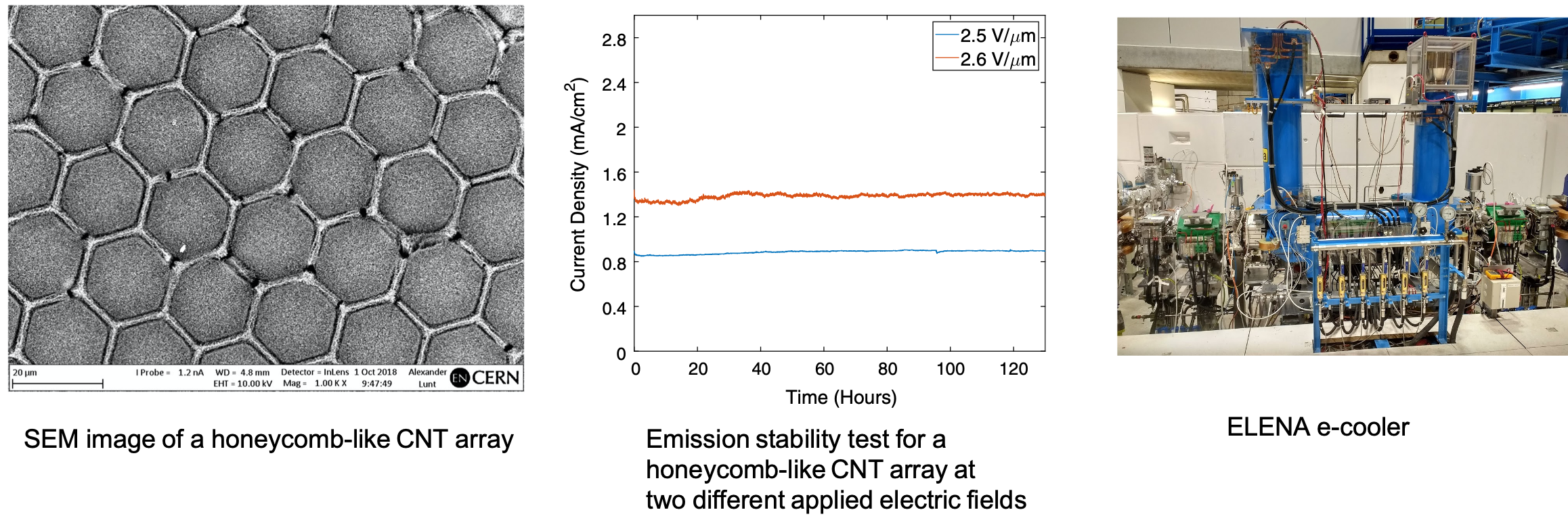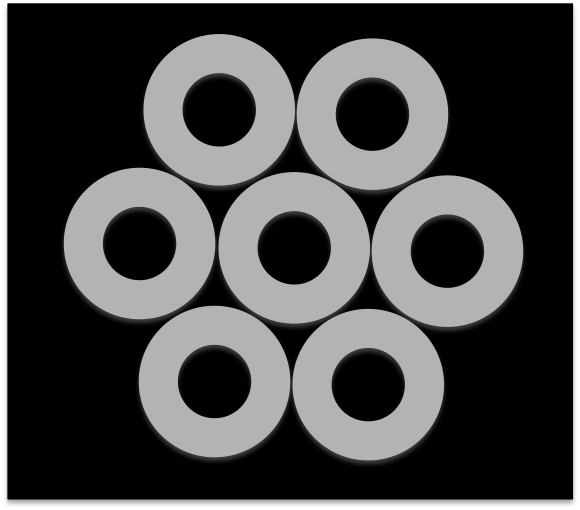Research
NACANA - Novel particle Accelerators based on CArbon Nanotube Arrays

Most high energy particle accelerators are based on radiofrequency (RF) technology. However, standard RF technology is limited to gradients of the order of 100 MV/m due to surface breakdown. Thus, larger and more expensive accelerator facilities are necessary in order to obtain higher energy particle beams. In the past, solid-state plasma wakefield acceleration using crystals was proposed as an alternative particle acceleration technique. The purpose was to obtain TV/m acceleration gradients allowing cheaper and ultra-compact particle accelerators and high energy photon sources. However, it has not been experimentally demonstrated yet. In recent years, new efforts have been focused on feasibility studies for the wakefield acceleration of particle beams using carbon-based nano-crystals such as carbon nanotubes (CNT) or metallic nanotube structures, e.g. porous alumina. CNT configurations may be advantageous over typical crystal media like silicon because of their large degree of dimensional flexibility and thermo-mechanical strength, which could be suitable for the channelling acceleration of intense beams. For example, CNTs allow transverse acceptances of the order of up to 100 nm, i.e. three orders of magnitude larger than a typical silicon channel. Therefore, CNTs might be used for wakefield acceleration using either a beam or a laser as driving source.
Combining accelerator physics, solid-state physics and material science, we investigate the feasibility of using CNT structures for channelling wakefield acceleration and its potential application to build ultra-compact particle accelerators and X-ray radiation sources. This includes the design and operation of a proof-of-principle experiment to study the performance of CNT arrays for wakefield particle acceleration.
Application of Nanostructures and Metamaterials in Accelerator Physics

Due to their special optoelectronic, thermal and mechanical properties, CNT and graphene based structures might offer new paths for manipulation and acceleration of beam particles beyond the current state-of-the-art.
In the context of this project we investigate potential applications of carbon based nanostructures and metamaterials in the design of various accelerator subsystems, e.g., electron guns, solid-state wakefield acceleration systems and beam diagnostics.
For example, CNT based cold electron field emitters can be applied to the electron gun of electron coolers of low energy antimatter facilities, such as the ELENA (Extra-Low ENergy Antiproton) ring at CERN. The use of a CNT based electron gun in the ELENA cooler, aside from hopefully decreasing the electron beam temperature, would also allow simplification of the gun arrangement. This project is being developed in collaboration with CERN and The University of Liverpool.
Design of Compact Particle Accelerators

R&D activities towards the design of more compact, cost-effective and sustainable particle accelerators, storage rings and synchrotron light sources. For instance, we are currently contributing to the design and beam dynamics studies of a superconducting compact storage ring for heavy-ion spectrometry, in the frame of the ISRS (ISOLDE Superconducting Recoil Separator) collaboration. The ISRS concept is based on an innovative topology of superconductive multifunction Canted-Cosine-Thera (CCT) magnets. Although, in principle conceived for its application in nuclear physics research, this project presents strong synergies with the development of hadron-therapy gantries based on the CCT technology.

